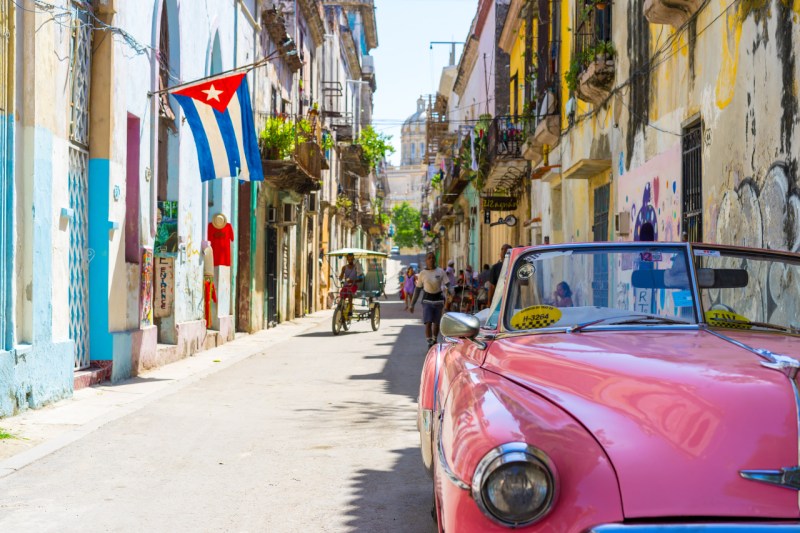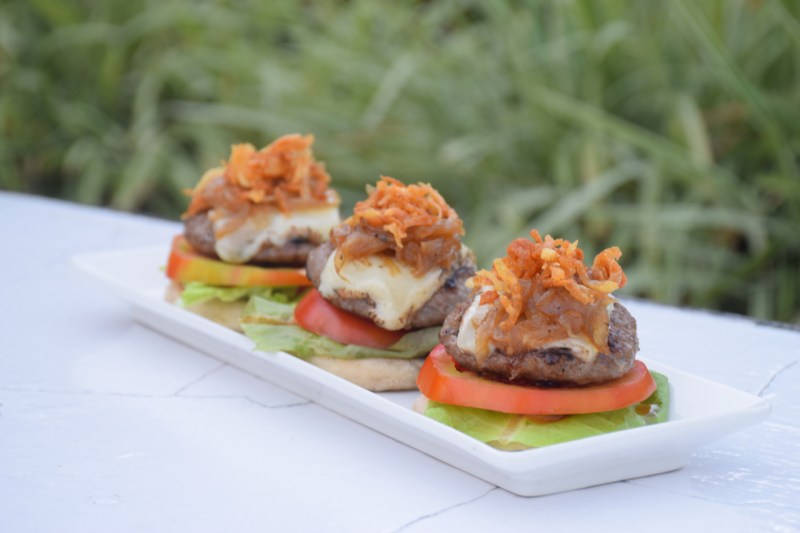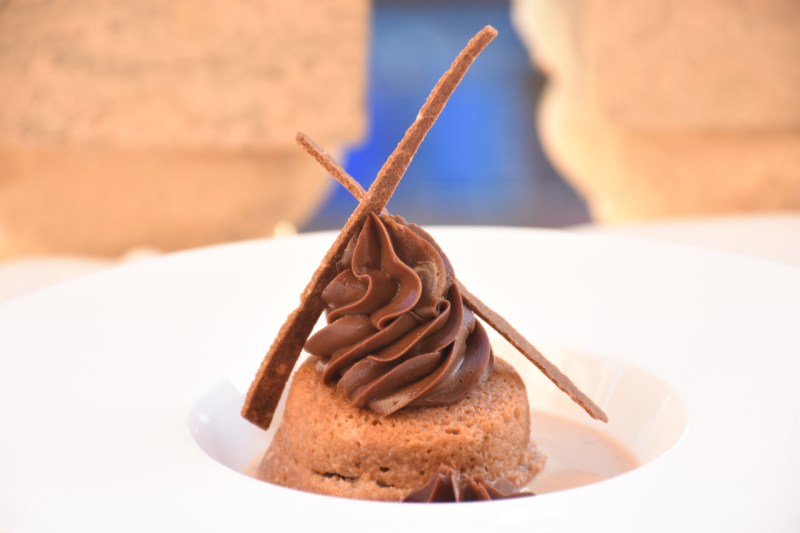Cuba, a vibrant Caribbean nation, is also home to an incredible cuisine. Only one hundred miles from Florida, Cuban cuisine is relatively under-represented in the American culinary landscape. One factor might be America’s tense relationship with Cuba, a symptom of decades of Cold War-era geopolitics.
In the last few years, Cuba has seen enormous changes both culturally and economically, much of it directly impacting the food culture. A cookbook that’s showcasing this evolving food scene is A Taste of Cuba

Related Guides
- How To Make Cuban Coffee
- What Americans Need to Know Before Traveling to Cuba
- How to Make a Cuban Sandwich
- Cuba Travel Guide
The Staples of Cuban Cuisine
Cuban cuisine is a dynamic blend of Spanish, French, African, and Taino (indigenous people of the Caribbean) influences. As a Caribbean nation, Cuba shares similar ingredients with its island neighbors, namely pork, rice, beans and tropical produce like bananas and avocados. Pork is by far the most popular meat in Cuba, flavoring everything from stews to roasts. Since sugar is a major Cuban crop, desserts lean on the sweet side, often with European influences. For instance, some popular desserts include Spanish-style custard flan and French chocolate mousse.
However, Cuban cuisine also has its own distinctive flair. Like most Caribbean nations, beans and rice are staples. Only in Cuba, black beans are preferred over red beans. Many Cuban dishes will feature the seasoning trio of onions, garlic, and cumin, giving the food a distinctive fragrance. Cuban coffee, an espresso-like drink made in a ‘cafetera’ (a small, stove-top coffee pot), is iconic and considered by many to be the best in the region. Cuban cuisine can also vary depending on the locale. In the northern part of the island, the Spanish influence is prevalent, evidenced by dishes like paella. In comparison, the southern part of the island features a combination of French and tropical influences.
Paladares, The Private Restaurants of Cuba

All of the foods featured in A Taste of Cuba are from paladares. Named after the word paladar (which means “palate” in Spanish), these unique Cuban private restaurants are a recent invention, having only been legal since 1993 when the Cuban government authorized a limited amount of self-employment occupations. There were strict rules to these locations — 12 seats maximum along with a minimum of two employees that must be family members to the homeowner. By 2011, restrictions were loosened, leading to paladare boom.
“In the late 1990s, there were only a few ‘paladares,’ while a couple of years ago, the number had grown to thousands of paladares throughout the country, each one with its own uniqueness in décor, menu, history, style, and technique,” said Alonso.
The Cuban American Connection
For decades, a terse relationship existed between Cuba and America. Since the communist Cuban Revolution in 1959, America’s relationship with Cuba was dictated by its Cold War rivalry with the Soviet Union. Under the Obama administration, relations between the two nations were improved for the first time in decades.
Because of the Cuban Revolution, many Cubans also came to America, particularly Florida. This has led to an interesting culinary dynamic within the Cuban diaspora community. While many of the recipes in the Cuban American community are similar to the original versions, there are differences. Food in Cuba is less processed and more natural tasting due to the lack of chemicals and preservatives. To replicate these authentic Cuban recipes in America, adaptations were needed.
“This is why it was so crucial that my co-author and test kitchen chef, Valerie Feigen, not only translated recipes given to us from Cuban chefs from Spanish to English, but she also had to translate the quantities of ingredients, and, at times, find replacements with similar tastes.” said Alonso.
Tres Leche Chocolat (Three Milk Dark Chocolate Cake)

(By La Guarida Paladar From A Taste of Cuba.)
For Chocolate Sponge Cake:
Ingredients:
- 3 large eggs
- .5 cup sugar
- .5 cup flour, sifted
- 2 tbsp cocoa powder
For Three-Milk Sauce:
Ingredients:
- 2 cups powdered milk, or one 14 oz can evaporated milk
- 1 cup sweetened condensed milk
- .5 cup heavy cream
- .25 cup cocoa powder
For Chocolate Mousse
Ingredients:
- 8 oz bittersweet chocolate, chopped
- .5 cup sugar
- 4 tbsp (1/2 stick) salted butter
- 1 tsp triple sec, Cointreau, or other liqueur
- 2 large egg yolks
- 1 cup half-and-half
Method:
- To make the sponge cake, preheat the oven to 350 degrees Fahrenheit. Butter a 6-cup cupcake pan or an 8-inch square pan.
- Separate the eggs. Beat the egg whites at high speed with an electric mixer until stiff.
- In a separate bowl, combine the sugar and egg yolks and beat on high speed for 3 minutes. Very gently fold in the flour and cocoa powder. Do not beat or stir vigorously. Gently fold the yolk and chocolate mixture into the stiff egg whites until just combined.
- Pour the batter into the prepared pan and bake for about 12 minutes in the cupcake pan or about 15 minutes in the square pan, just until the cakes are cooked through and a knife or cake tester stuck into the center comes out clean.
- Release the cakes from the pan by running a knife along the sides. Let cool for 5 minutes in the pan, then remove the cakes and set aside to cool completely on a wire rack. These cakes can be kept for up to two days at room temperature in an airtight container.
- To make the three-milk sauce, combine all ingredients into a blender and blend well. Strain and set aside. The mixture can be kept covered in the refrigerator for up to two days.
- To make the chocolate mousse, microwave the chocolate, sugar, and butter in a glass bowl for 3 minutes, stopping to stir the mixture every minute.
- Remove from the microwave and beat with a handheld beater for 2 minutes, until the sugar is completely dissolved, and then add the liqueur.
- Slowly add yolks, one tsp at a time, to the hot chocolate mixture, making sure to beat the mixture on medium speed while adding to prevent the eggs from curdling. Continue to beat while slowly adding the half-and-half. Refrigerate for 24 hours before serving.
- To assemble the cakes, place each cupcake-sized sponge cake in an individually-sized serving bowl or dessert plate. If the cake was baked in an 8-inch square pan, slice the cake into 6 pieces and place on a dessert plate. Pour the chocolate sauce over the cakes to drench them. Scoop the chocolate mousse into a pastry bag and pipe a large rosette of mousse onto the top of each cake using a flower tip. Serve immediately.



